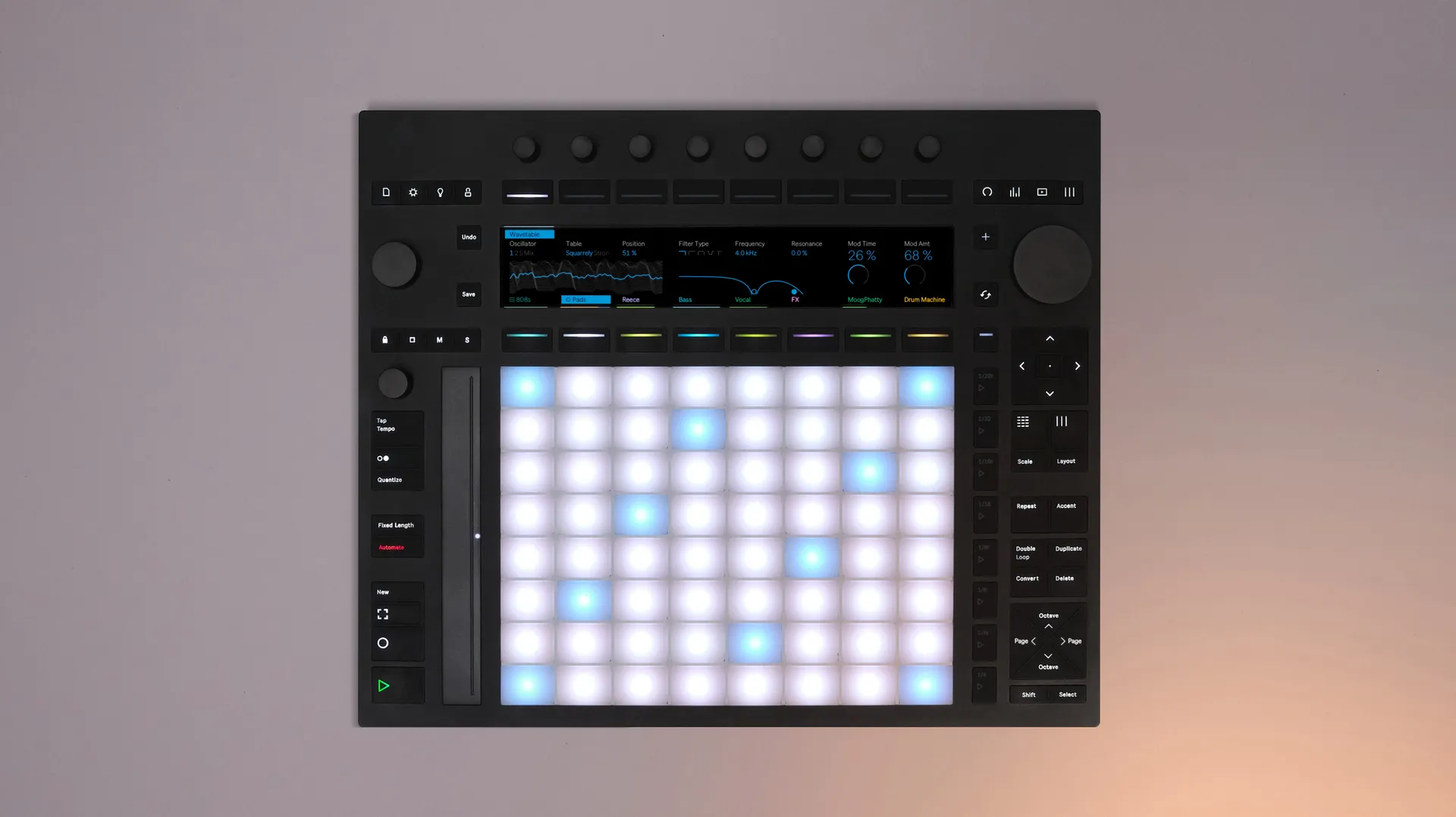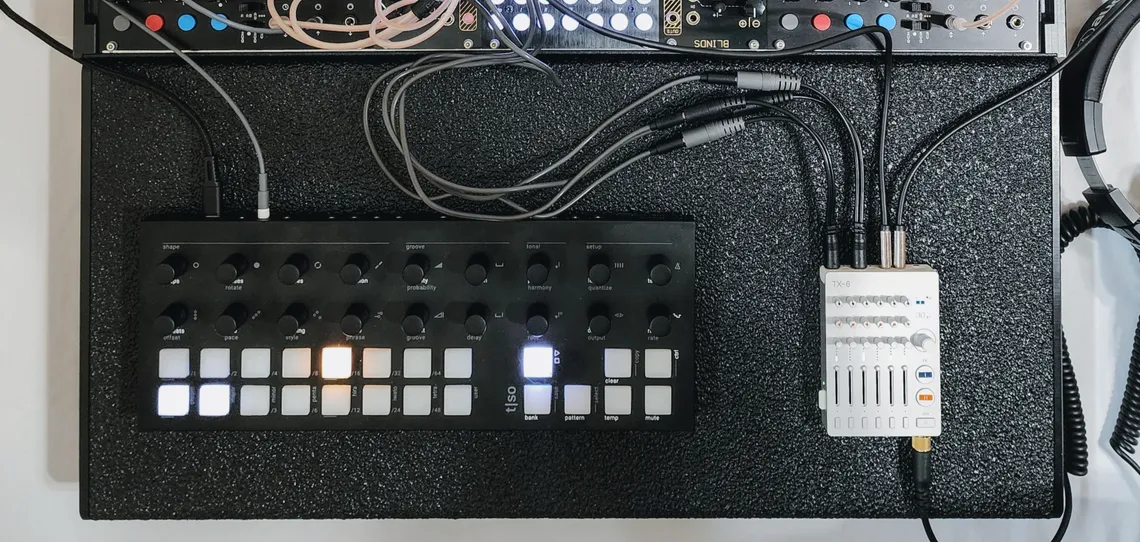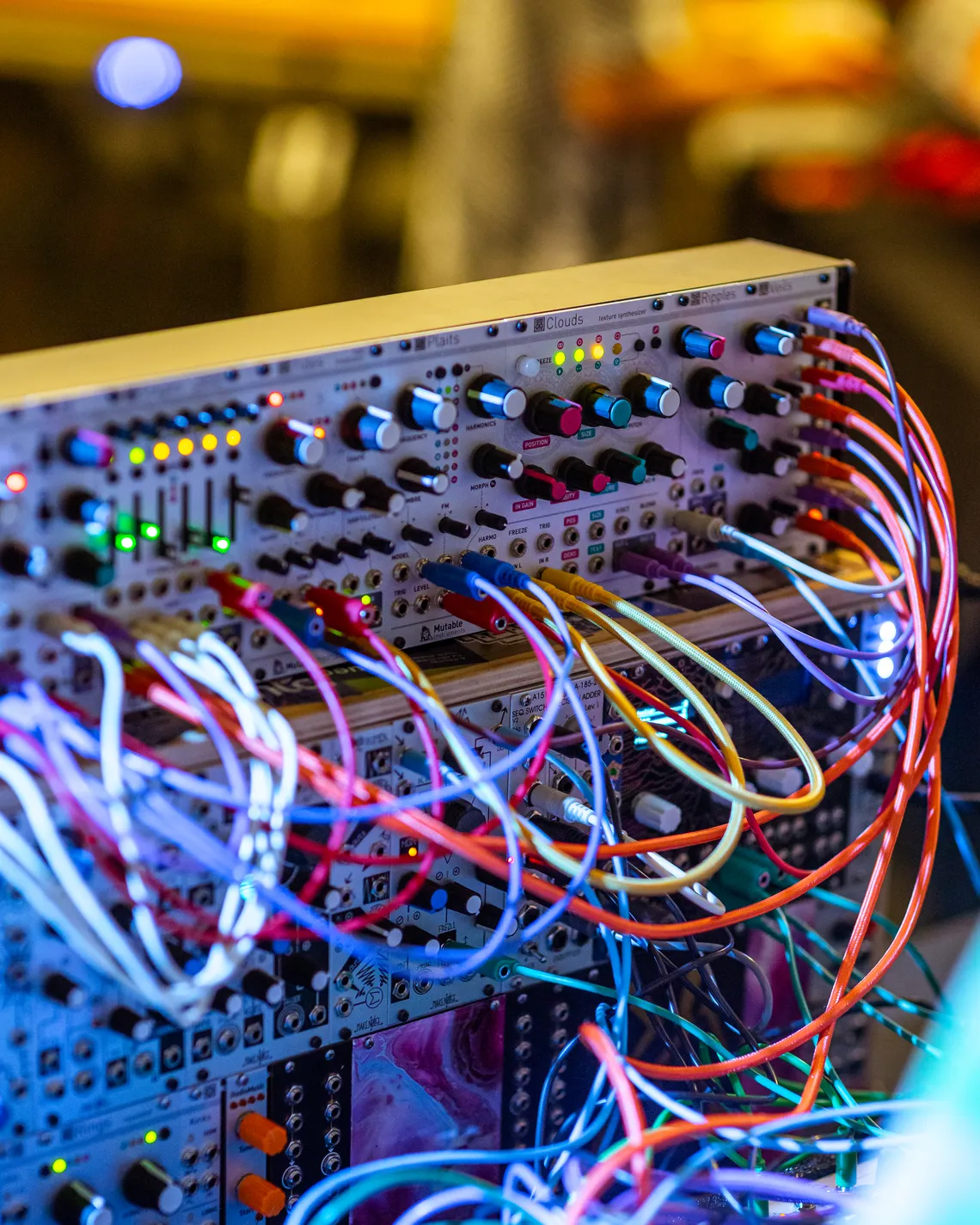Start with a controller
MPE begins with the controller, the device you physically interact with, and aids in translating your hand movements into the polyphonic expressions.
ROLI Seaboard
Unlike traditional piano keyboards, the Seaboard RISE 2 offers five intuitive movements for shaping sound.
Ableton Push 3
The Ableton Push 3 is equipped with MPE-enabled pads, offering a high level of sensitivity to finger movements. This feature allows musicians to bend, slide, and shift between different notes, sounds, and articulations with ease.
LinnStrument
LinnStrument's technology allows for direct slides in pitch from one note to another, tilting of the finger for timbral variation, and varying note loudness with pressure or velocity.
Next add MPE conversion
Eurorack runs on CV control, between the controller and synthesizer module you will need to translate the MPE messages into either CV for most modules, or MIDI CC messages in cases where a module supports traditional MIDI.
MPE to CV conversion: FH-2
The FH-2 is an 8HP Eurorack module primarily designed for MIDI to CV conversion. It supports MIDI Polyphonic Expression (MPE) right out of the box, making it compatible with MPE controllers. This functionality allows the module to process and convert the detailed expression data from MPE instruments into control voltages suitable for modular synthesizers.
Its polyphonic capabilities enable the module to handle multiple MIDI channels simultaneously, translating them into corresponding CV signals. This feature is particularly useful for users looking to integrate more complex, layered sounds into their modular setups, as it allows for independent control of multiple voices.
The inclusion of MPE support in the FH-2 means that it can interpret the expressive nuances of MPE-enabled instruments, such as pressure sensitivity, pitch bends, and modulation on a per-note basis. This adds a dimension of expressiveness to modular synthesizer setups that traditional MIDI to CV converters without MPE support cannot provide.
MPE to MIDI conversion: Ableton and M4L devices
MPE Control is a MIDI effect available in Max for Live (M4L), designed to manipulate incoming MPE (MIDI Polyphonic Expression) signals. This tool stands out for its ability to provide detailed adjustment options for each MPE data source. It is commonly used in combination with other devices to precisely calibrate the influence of MPE data on specific parameters within a setup.
A key feature of MPE Control is its capacity to shape and transform MPE signals, allowing for a fine-tuned approach to how these signals affect musical parameters. This functionality is particularly useful in scenarios where nuanced control over expressive elements like pressure, pitch bend, and modulation on a per-note basis is desired.
Additionally, MPE Control has the functionality to convert MPE signals into standard global MIDI format. This conversion is crucial for integrating MPE controllers with instruments or software that do not natively support MPE. By translating MPE data into a more universally recognized MIDI format, MPE Control ensures broader compatibility and extends the utility of MPE controllers across various musical instruments and digital audio workstations that may not have inherent MPE support.
Choose your synth
With a controller and MPE conversion setup any standard CV or MIDI controlled synthesizer module will work.
For CV control: Mutable Instruments Plaits
Add expression to timbre, morph, or even the model for some craziness.
For MIDI CC control: RYK Vector Wave
This synth is MIDI compatible and many of the internal parameters can be mapped to the expression messages now arriving over MIDI CC.
Or go with direct MPE support
Skip the MPE conversion and use a Eurorack module that supports MPE.
MPE synthesizer: OXI Coral
OXI Coral is a synthesizer that has recently been enhanced to include MPE (MIDI Polyphonic Expression) support. This upgrade effectively transforms the device into a full polyphonic synthesizer capable of handling up to eight voices simultaneously. The integration of MPE allows each of these voices to be independently expressive, providing detailed control over the nuances of sound modulation.
With its polyphonic structure, OXI Coral can manage multiple notes at once, each potentially with its own timbral and dynamic characteristics, as allowed by MPE technology. This makes the synthesizer suitable for complex musical pieces requiring intricate voice manipulation and expressive depth.
The upgrade to MPE compatibility means that OXI Coral can now interpret the advanced expression data from MPE controllers, such as varying degrees of pressure, pitch shifts, and timbre changes for each individual note. This capability significantly expands the creative possibilities for users, allowing for a more nuanced and expressive performance when using the synthesizer in conjunction with MPE-compatible instruments.





